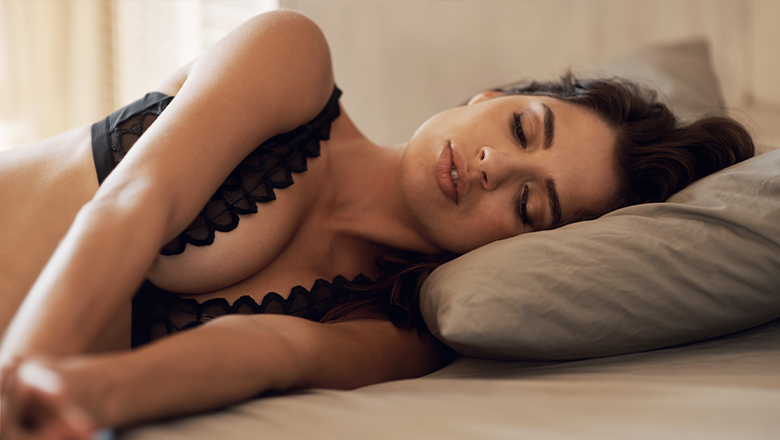
Plastic Surgery Blog


At The Plastic Surgery Clinic, we’re all about customizing your procedure to create the best and most natural looking result for you. As you may have noticed if you’ve read some of our blogs (or watched some of our videos) about it, breast augmentation is probably the most extensively customizable operation that our surgeons perform. There are so many factors that go into creating your new look, which keeps our job interesting and challenging! But it can become confusing for prospective patients, especially if you’re just beginning to look into the operation.
You might already be thinking about different choices choices you could make in implant sizes, and maybe you’ve been reading up on shape and profile as well. But did you know that breast implants actually come with different surface textures as well? Some are perfectly smooth, as you might expect, and some have a more textured surface. Let’s dive a little deeper and take a look at some important research on the topic published by our surgeons.
Textured surface implants were developed with a couple of different goals in mind. When an implant is placed in the body, fibrous scar tissue develops around it forming what’s known as a capsule. Our bodies naturally form this protective capsule around any foreign object, and it’s not typically noticeable. With breast implants, the capsule can help keep the implant in place.
With smooth surface breast implants, the capsule that forms does not adhere to the shell of the implant since the smooth surface doesn’t offer the fibrous tissue anything to latch on to. That means that the implant can move around in the pocket, which some patients appreciate since it mimics the feel and movement of natural breast tissue. The downside for some patients is a rare occurrence of implant displacement over time because of its ability to move.
Textured implants allow for more friction or sometimes even adherence between the implant and the tissue that forms around it. This way the implant position becomes more stabilized, preventing displacement (you may have read about phenomena like “bottoming out” or lateral displacement, meaning movement to the side of the chest) and making them less likely .
Previous studies have reported a decreased rate of capsular contracture in patients with textured implants placed above the muscle. Capsular contracture is a complication that can occur after breast augmentation where the fibrous scar tissue capsule tightens and constricts the implant. In less severe cases, it simply makes the breast feel firm, but in more severe cases, the breast becomes hard and visibly distorted and can become painful.
Since we always want to lower the risk of complications after surgery as much as possible, textured implants gained popularity for this reason.
Our surgeons are big proponents of continual research in order to deliver the highest level of care and best results possible to our patients. They frequently contribute scientific research to the most highly regarded peer reviewed surgical journals around the world and share their work with other surgeons. They wondered if some of these previous studies on implant texture and rates of capsular contracture still hold up in light of what we know now about how capsular contracture typically forms, and now that we have new operating techniques.
Along with Dr. Maryam Saheb-Al-Zamani, our surgeons—Dr. Lista, Dr. Ahmad and Dr. Austin—published a study to re-evaluate the specific relationship between implant surface texture and rates for capsular contracture using data from The Plastic Surgery Clinic. One concern they had about previous studies was that they used data with small sample sizes, could not control for technique by including multiple different surgeons, and that the studies were concerned with an older generation of implants.
Instead, they reviewed the cases of 526 patients who underwent breast augmentation surgery with us between 2010 and 2017, where 212 patients had smooth round implants and 314 patients had textured round implants, all of them made with cohesive gel silicone. There were 7 cases of capsular contracture with the smooth group and 5 cases with the textured group. These comparative rates were not found to be statistically significant.
The surgeons concluded that smooth surface implants placed above the muscle did not present a significantly increased risk of capsular contracture compared to textured implants. They found that surgical technique focused on limiting bacterial contamination of the implant was a more clinically significant approach than considerations about implant surface texture when it comes to this particular complication.
Their overall conclusion was that the risk ratio difference for capsular contracture is small, especially when you look at the risk of other complications that can occur. You can find out more by taking a look at their paper in the aesthetic surgery journal.
There is another reason why we transitioned to only use smooth implants around 2016. We’ve been closely following all of the literature about BIA ALCL, or Breast Implant-Associated Anaplastic Large Cell Lymphoma. This is an extremely rare type of cancer of the immune system that can develop in the scar tissue capsule around the breast implant. In about 95% of these cases this cancer is easily treatable and doesn’t require treatments like chemotherapy.
The vast majority of cases of BIA-ALCL are associated with a specific type of aggressively textured implants, which came to light over the past few years. We stopped using this specific type of implant in 2012 when we learned more about their connections with higher risks of other complications. The fact that there were no cases in reported literature of BIA-ALCL occurring in patients where only smooth implants were used contributed to our decision to stop using textured implants altogether.
In cases where patients have previously had breast augmentation with textured implants, the risk of developing ALCL is so extraordinarily low that the very small risks associated with another surgery are actually greater, meaning overall, leaving the implants in place is very likely the safest route forward. If you’ve undergone a breast augmentation with textured implants and have some questions about this (or any questions or concerns more generally), as with any surgery, definitely get in touch with your doctor and they can provide you with the best and most specific advice.
Did we answer all your questions? Our goal is to ensure you have the best information possible to make your decision. If you still have questions, we’re here to help.
 Email Us
Email Us
